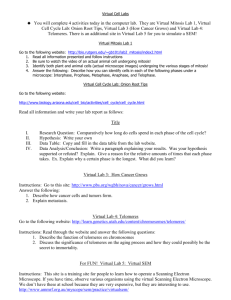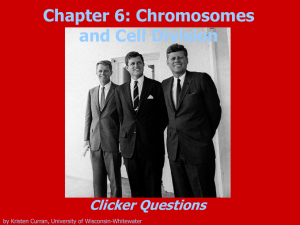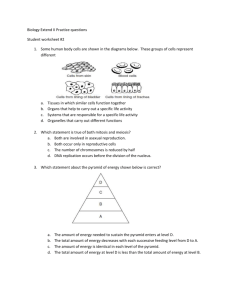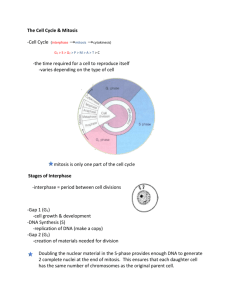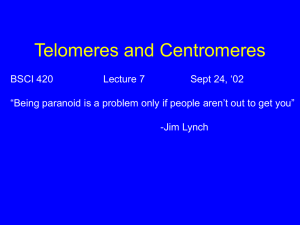Key points: Chromosome Biology
advertisement
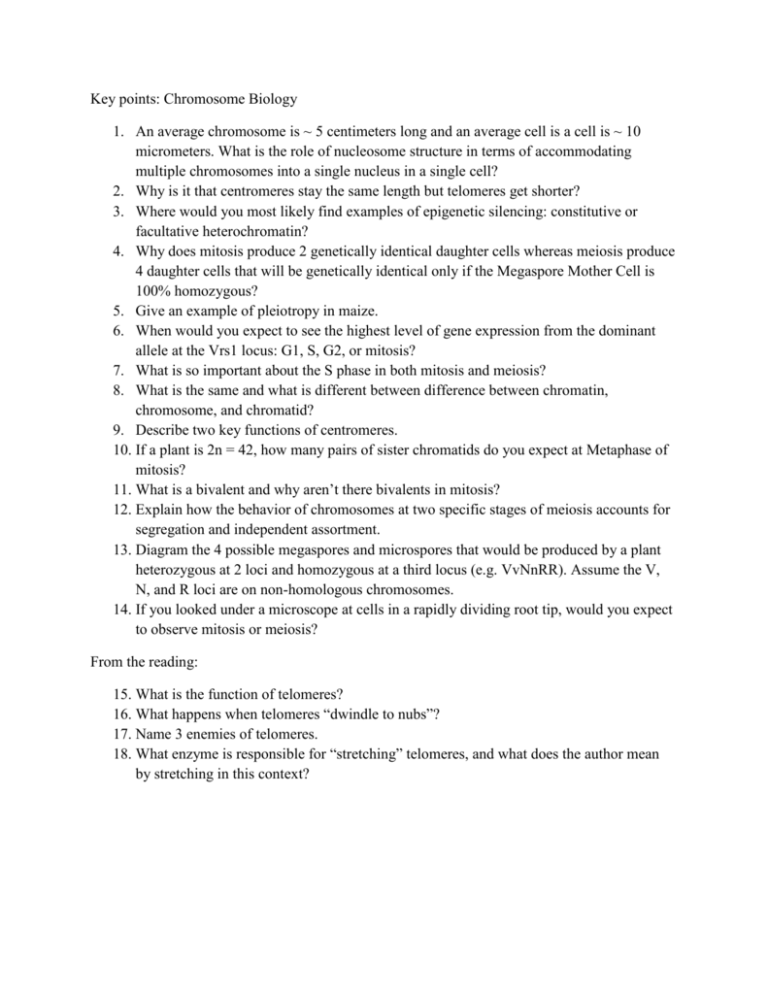
Key points: Chromosome Biology 1. An average chromosome is ~ 5 centimeters long and an average cell is a cell is ~ 10 micrometers. What is the role of nucleosome structure in terms of accommodating multiple chromosomes into a single nucleus in a single cell? 2. Why is it that centromeres stay the same length but telomeres get shorter? 3. Where would you most likely find examples of epigenetic silencing: constitutive or facultative heterochromatin? 4. Why does mitosis produce 2 genetically identical daughter cells whereas meiosis produce 4 daughter cells that will be genetically identical only if the Megaspore Mother Cell is 100% homozygous? 5. Give an example of pleiotropy in maize. 6. When would you expect to see the highest level of gene expression from the dominant allele at the Vrs1 locus: G1, S, G2, or mitosis? 7. What is so important about the S phase in both mitosis and meiosis? 8. What is the same and what is different between difference between chromatin, chromosome, and chromatid? 9. Describe two key functions of centromeres. 10. If a plant is 2n = 42, how many pairs of sister chromatids do you expect at Metaphase of mitosis? 11. What is a bivalent and why aren’t there bivalents in mitosis? 12. Explain how the behavior of chromosomes at two specific stages of meiosis accounts for segregation and independent assortment. 13. Diagram the 4 possible megaspores and microspores that would be produced by a plant heterozygous at 2 loci and homozygous at a third locus (e.g. VvNnRR). Assume the V, N, and R loci are on non-homologous chromosomes. 14. If you looked under a microscope at cells in a rapidly dividing root tip, would you expect to observe mitosis or meiosis? From the reading: 15. What is the function of telomeres? 16. What happens when telomeres “dwindle to nubs”? 17. Name 3 enemies of telomeres. 18. What enzyme is responsible for “stretching” telomeres, and what does the author mean by stretching in this context?



